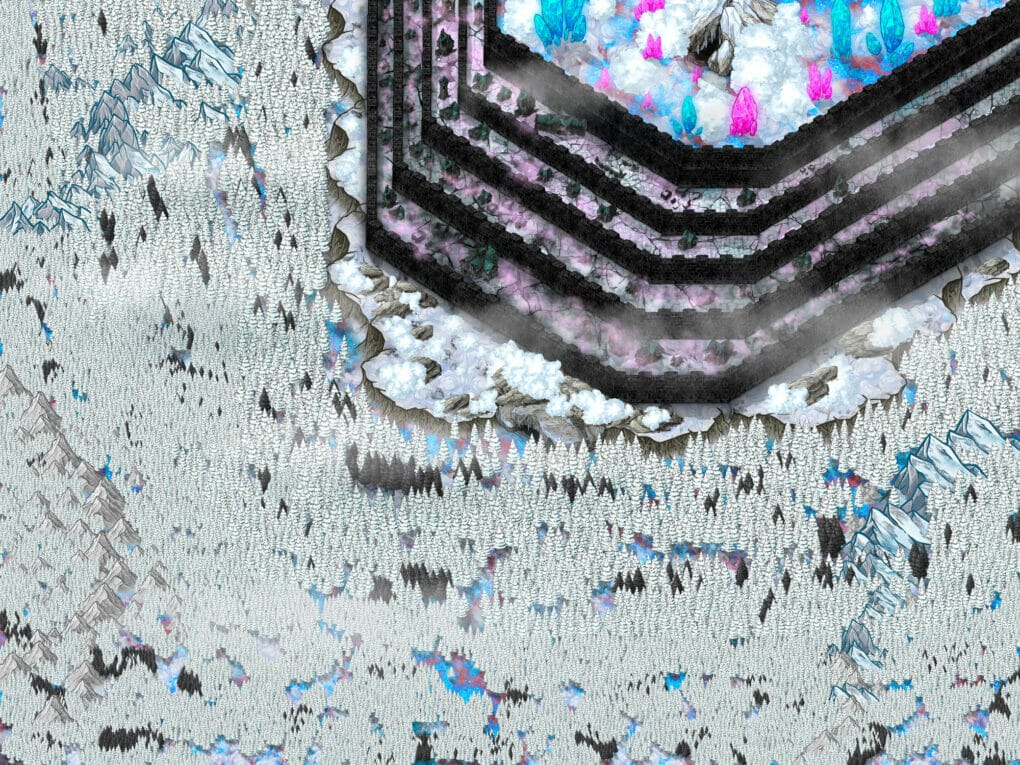
Never assume you’re bad at something until you get a 2nd or 3rd opinion. I used to think I was bad a writing dialogue. But, workshops, beta readers and editors kept complimenting my dialogue. We are probably the worst at telling what’s good or bad about our writing.
I read somewhere that you need to be good at talking to writing realistic dialogue. I’d have to disagree. I wouldn’t say, I’m quiet but, I don’t talk as much as most people. I much prefer listening. That’s the key. You need to be a good listener to write great dialogue.
How else can you write good dialogue?
Use Said but Sparingly
When I first started writing, I cracked open a thesaurus and tried to find all the different ways to say said. Don’t do that. Instead, stick with the tried and true, said, yelled, cried, screamed… You don’t have to break out things like exclaimed or articulated.
You also don’t want to use said too much. It can get a bit repetitive. Alternate your dialogue tags with actions. Take the below example for instance.
The white haired female turned. Blae grabbed her wrist. She frowned. Her nostrils flared. She snatched away her hand.
“What,” she snapped.
Blae grinned. “Thought you’d be happier to see me, sister.”
Her face relaxed. Divine felt her amusement even if her expression remained annoyed. Sister? Somehow, it made sense.
“I’m thrilled to meet you, little brother.” She bowed dramatically.
And now there were two of them. Great.
Introducing Characters
The above example also shows another issue I’ve read in dialogue. Often, when an author wants readers to know characters are related, the person will call the other, little brother or big sister. As an older sibling, I have never called my sibling, little brother. I’m not saying to never introduce your characters this way. Find a realistic way to show familial relationships. In The Sciell, Vayle calls Shade baby sister all the time. For him, it’s a term of endearment. In the above example from Chains of the Sciell, sister and little brother are used more condescendingly. At this point, readers already know they’re related.
Similarly, I’ve read some awkward introductions in first-person stories. The author needs the reader to know the narrator’s name, so they’ll have another character say their full name. It usually comes off awkward. There’s no one way to introduce characters through dialogue. Read to find authors who do it best.
Know Your Character’s Voice
Having taken the NY subway often, I’ve seen many discarded bottles in train cars rolling around and just being generally annoying. As a fun exercise, I’ll imagine how each of my characters would react to this rolling bottle.
Depending on her mood, Shade would shake her head at the humans or try to figure out how it got there. Vayle would be amused at Shade’s reactions. Xurice would ignore it. Lafeyette wouldn’t understand the interest but he’d want to share Shade’s amusement. At the next stop, Tearani would pick up the bottle and throw it out the open door.
Get to know your characters. They should all have their own voice. Read your dialogue out of context. Can you tell which character is talking without the dialogue tags?
Cut It If It Doesn’t Move the Story Forward
I’ve had to delete dialogue with good character-building information because it didn’t move the story. No matter how interesting it is, if it stops your story, it has to go. I loved the below scene. Still love it. It has some good information about the character’s race. But The Lost Sciell was already pretty long. I had to be ruthless in my editing. This scene didn’t move the story.
“There still isn’t a lot known about non-normals?” Josephine asked.
Tearani shrugged. “We are a small race with little resources and, in the past, we had no sense of community. If a being discovered something new, they weren’t sharing.”
“Why are Del’Praeli different from other beings?”
“You certainly are chatting today. I like it.”
Josephine’s face heated. “I’m only curious.”
She couldn’t stand another silent dinner. Tearani always answered their questions even if she made them suffer for it.
“And you’re getting defensive. You are so cute.”
The last thing someone Josephine’s age wanted to be called was cute but saying so would make Tearani tease her more.
“Del’Praeli are different,” Tearani continued, “By giving our bodies to the Darkness so often we were more connected to it and the vile things people stuffed it in. We are animals in human skin. Despite no longer being as connected to the Darkness, our children will be born like us. The effects the Darkness had on us is already engraved in our bodies.”
She reached over and plucked a noodle out of Josephine’s plate and plopped it in her mouth. Josephine looked from Tearani to her defiled bowl and pushed it away.
Tearani winced. “Still disgusting.”
Josephine slapped her hands on the table, causing all the bowls to rattle.
“Calm down, Nee,” Bel said.
He held his bowl in his hands.
“But she put her dirty hands in my food.”
“Hmm,” Tearani cocked her head, “Pouting is only cute on Shade.”
Understand Pacing
Dialogue tags make sure readers understand who’s speaking but, they also slow down the story. If you have some witty banter between two people, cut the dialogue tags. Included them at the start of the conversation so readers know who’s talking. Then, ditch them for the rest of the dialogue. Or, instead of tags, use character expressions or movements. For the below example, I stopped using dialogue tags towards the end of the conversation.
“Is it just us?” Kiran asked.
En curled his face and glanced at the shifters.
“I mean our team,” Kiran snapped.
He faced her. “You should’ve said that. No, I’m expecting three more people.”
“Do I know them?”
“I know how lovely you can be but no stranger is going to work with you. Of course you know them.”
En had been carrying that foul mood for weeks now. It was getting old.
“Why can’t you answer the question without giving attitude?”
Break Up Long Dialogue
Most advice tells you to keep your dialogue brief. I’d agree for the most part. However, with fantasy, in particular, a character may be explaining something about the world. This scene could go on for a while. I suggest not making those long dialogues a habit. But, they can be unavoidable. I’ve written a few. Break them up by having someone ask a question. Maybe have the speaker get briefly interrupted by a sudden loud noise. Or, if they’re talking on the go, describe the scene between explanations. Study dialogue in books to know when yours has gone on for too long.
Writing Dialogue with Fantasy Languages
Recently I’ve gotten into making new language for my worlds. Incorporating them into a story has been a struggle. I don’t want to confuse readers. So, for the languages, I’ll include a glossary at the front of the book. And, I’ll try to add context clues around the word so readers can pick up its meanings.
“What is it?” Lock asked.
“Anuli tried to escape again, Lock-Yanwha,” Manyt said.
Of course, Manyt wouldn’t answer the question when Haylan asked it. Lock-Yanwha or just Yanwha was far too formal to use when it was just them. Manyt had a habit of rolling those titles out at random times, probably just to be annoying.
If you’re struggling with your dialogue, inhale other books. Study how other authors handle them. Make sure you have someone read your book and give you feedback. What we think is good, may not be. Or what we think is bad, may be one of the best things about our books.
More Resources
How to Write Dialogue: Master List of Dialogue Punctuation & Tips




